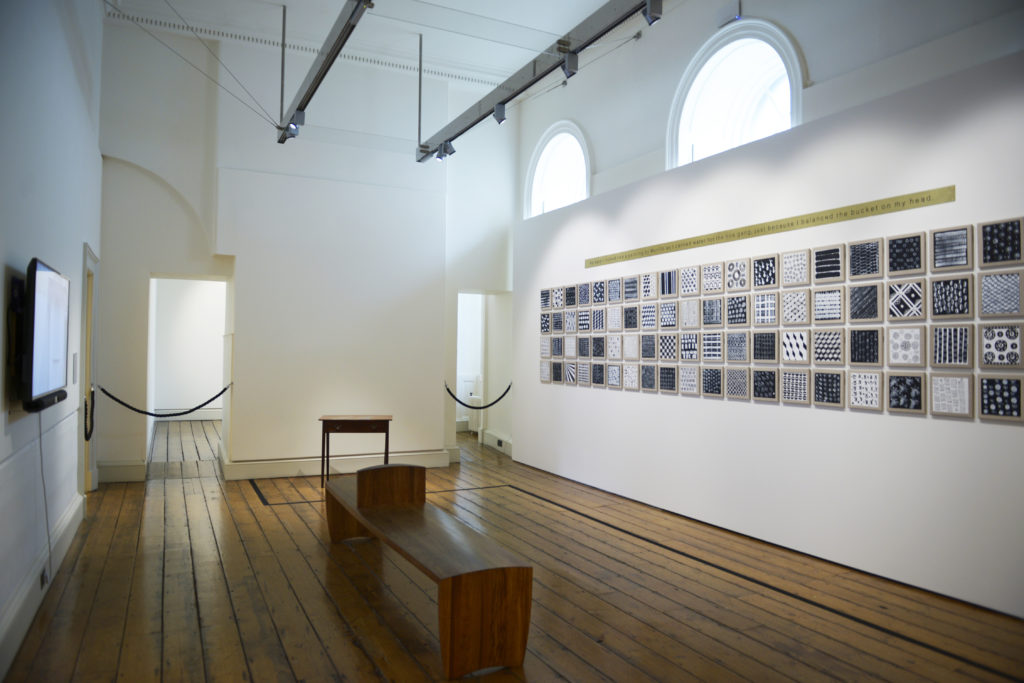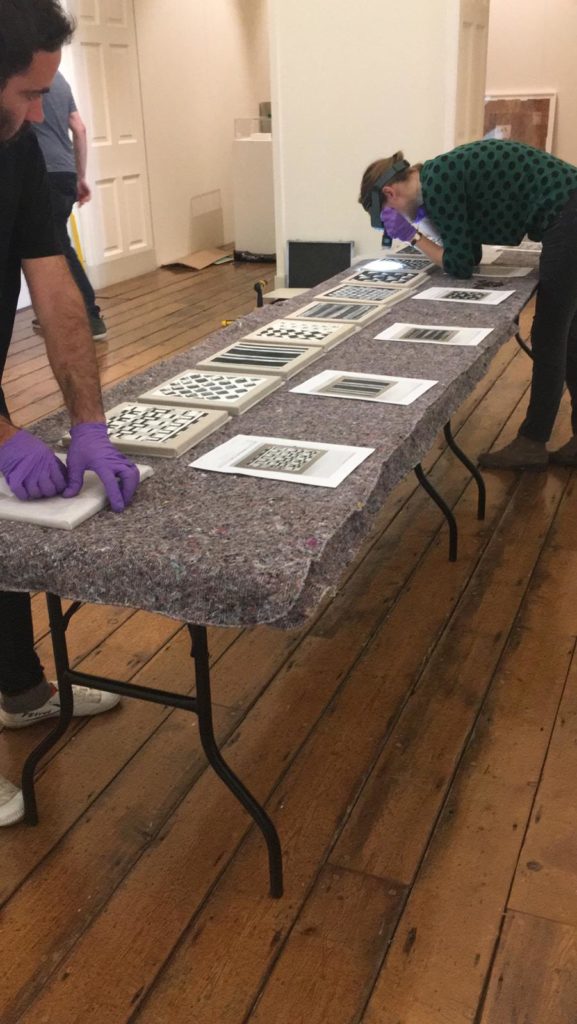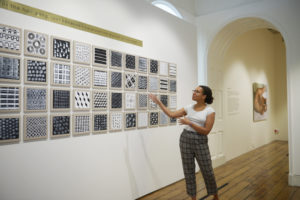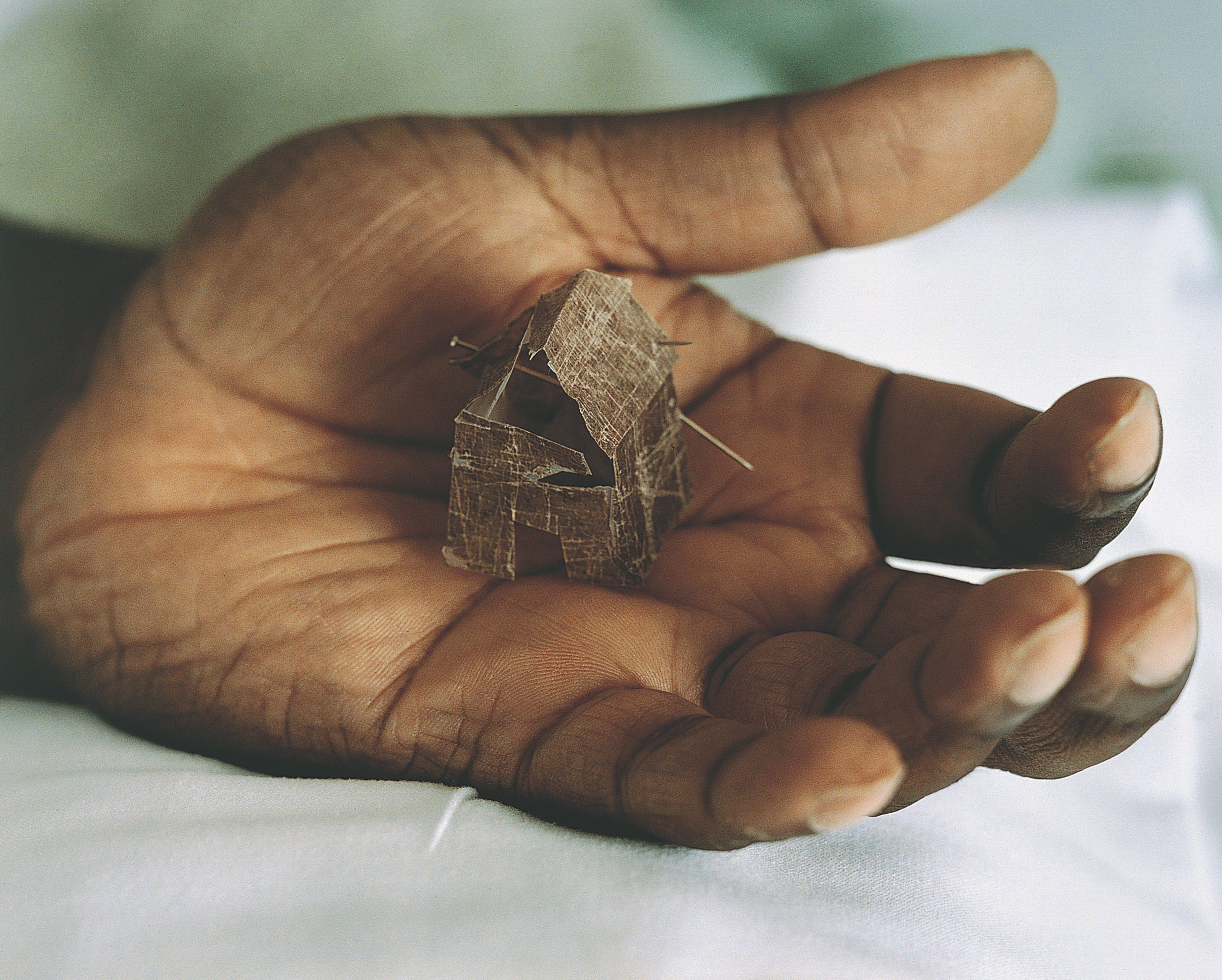Lubaina Himid’s Cotton.com (2002) is an absolute show stopper and captures your attention as soon as you enter the exhibition space of GENERATIONS. Made up of 84 individual patterned oil paintings and a brass strip, it is a mesmerizing work that deserves a closer look.

Installation Shot: Cotton.com in GENERATIONS: Connecting Across Time and Place
The creation of Cotton.com was inspired by an act of solidarity. In the nineteenth century, textile workers living in the northwest of England were affected by the American Civil War, as their livelihood was dependent on the provision of slave-grown cotton. Even though the British mill workers were themselves living and working under harsh conditions, they held rallies and wrote to President Lincoln, supporting his decision to end slavery in the United States.
Lubaina Himid decided to capture this historic moment of unity between the British working class and enslaved plantation workers across the Atlantic. She wanted to create an imagined conversation between both parties, but instead of using text or language, Himid turned towards patterns. Each of the 84 panels has a unique black and white pattern, creating a conversation that is open to interpretation and accessible to everyone.
The work is crowned by a long brass panel stating: ‘He said I looked like a painting by Murillo as I carried water for the gang just because I balanced the bucket on my head.’ This quote is adapted from a sentence that Himid found in a plantation inspector’s report. Himid felt that she needed to rectify this objectifying statement, and rephrased it so that it is now written from the woman’s perspective, giving her a voice and agency.

Cotton.com being unpacked and condition checked during installation period
The work addresses the impact of colonialism, transnational trade, slavery and misogyny. From the very beginning of our exhibition process, we knew that we wanted to show this powerful piece, and it has stuck with us ever since. Cotton.com was also the first work that was hung during our installation process. It took an entire day to unpack, condition report and hang all 85 components. Before all of this happened, our art handlers had to grid the wall meticulously so that the distance between each panel is exactly the same.
Now that the work is up on the walls, it has taken on a life on its own. Placed together with Helen Cammock’s There’s a Hole in the Sky Part II: Listening to James Baldwin (2016) and Lucy Skaer’s The Tyrant (2006), we hope that it sparks conversation about distribution of power, and how it is crucial for us to learn from the past in today’s world.



